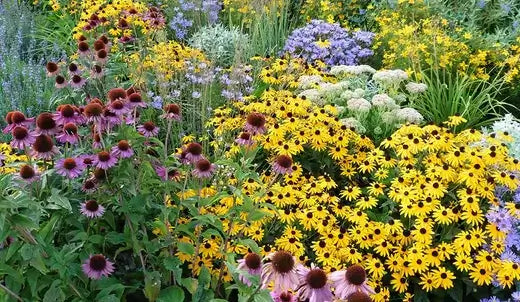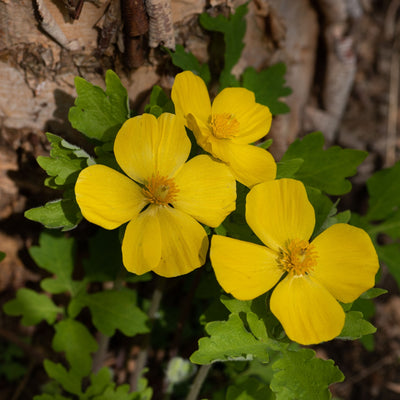Caring for perennials throughout the seasons is essential to ensure their health and longevity
Here's a guide to help you care for perennials throughout the year:
Spring: Clear debris: Begin by removing dead leaves and twigs that may have accumulated around the plants during winter. It helps prevent pests and diseases.
Pruning: Prune any damaged or dead stems to encourage new growth. Cut back any overgrown perennials to maintain their shape and size.
Divide and transplant: Spring is an excellent time to divide overcrowded perennials. Dig up the clumps, separate them into smaller sections, and replant them in well-prepared soil.
Weed control: Stay vigilant about removing weeds, as they compete for nutrients and water with your perennials. Regular weeding prevents them from taking over your garden.
Fertilize: Apply a slow-release, balanced fertilizer around the base of the perennials. Follow the instructions for proper application rates.
Ensure your perennials receive adequate water, especially during hot and dry spells
Water frequently to encourage profound root growth. Water in the morning to minimize evaporation and reduce the risk of fungal diseases.
Mulching: Apply a layer of organic mulch, wood chips, and shredded bark around the plants. Deadheading: Remove spent flowers regularly to promote blooming and prevent the plants from putting energy into seed production.
Staking: Tall or floppy perennials may require staking to prevent them from falling over or being damaged by heavy rain or wind. Use bamboo stakes or other supports to prop them up.
Pest and disease control: Monitor your perennials for signs of pests or diseases. If you notice any problems, take appropriate measures, such as using organic insecticides or disease control methods. If you are looking for plants that are pest resistant plant native-like Lily Of The Valley, Bloodroot, and Poppy.
Fall: Clean up: Remove any dead foliage and debris from the garden to prevent the buildup of disease pathogens and pests over winter. Cutting back: Cut back the stems of herbaceous perennials to a few inches above the ground after they have bloomed. It promotes tidiness and prevents diseases from overwintering in plant debris.
Mulching: Apply a thicker layer of mulch in the fall to insulate the soil and protect the roots from freezing temperatures.
Divide and transplant: Fall is another suitable time to divide and transplant perennials. Be sure to complete this task well before the first frost to allow the plants to establish themselves.
Winter: Protecting from frost: If you live in an area with harsh winters, consider protecting less hardy perennials by covering them with a layer of straw, evergreen boughs, or a frost blanket. It helps insulate the plants from freezing temperatures and frost heave.
Avoid overwatering: Reduce watering in winter, as plants are dormant and require less moisture. However, continue to monitor soil moisture levels and provide water if there are prolonged dry periods.
Planning and preparation: Winter is an excellent time to plan for the growing season. Research new perennials, draw up garden plans, and order seeds or plants for spring planting.
Remember, care requirements may vary depending on the type of perennials you have in your garden
It's essential to research the specific needs of each plant to provide the best care throughout the seasons.

